Introduction:
Usually, natural dyes are derived from plants, animals, minerals, and microorganisms; however, plants are the main source of natural dyes. As interest in natural dyes and traditional dyeing techniques in different countries expanded, different academics researched and compiled information on the ancient literature.
Sources of Natural Dyes
All natural sources can be grouped into four categories. They are as follows:
- Plant/Vegetable Source.
- Animal/insects source./Biological source
- Mineral Source.
- Microbial and fungal source.
1. Plant/Vegetable Sources of natural dyes:
There are a lot of natural dyes that are extracted from plants, such as roots, heartwood, bark, stems, flowers, fruits, etc. Most of the dyes that are extracted from plants. Some Most import plant source natural dyes are described below.
Henna:
- Plant: Lawsonia Inermis
- Family: Lythraceae
- Genus: Lawsonia
- Part used: Leaf (Red)
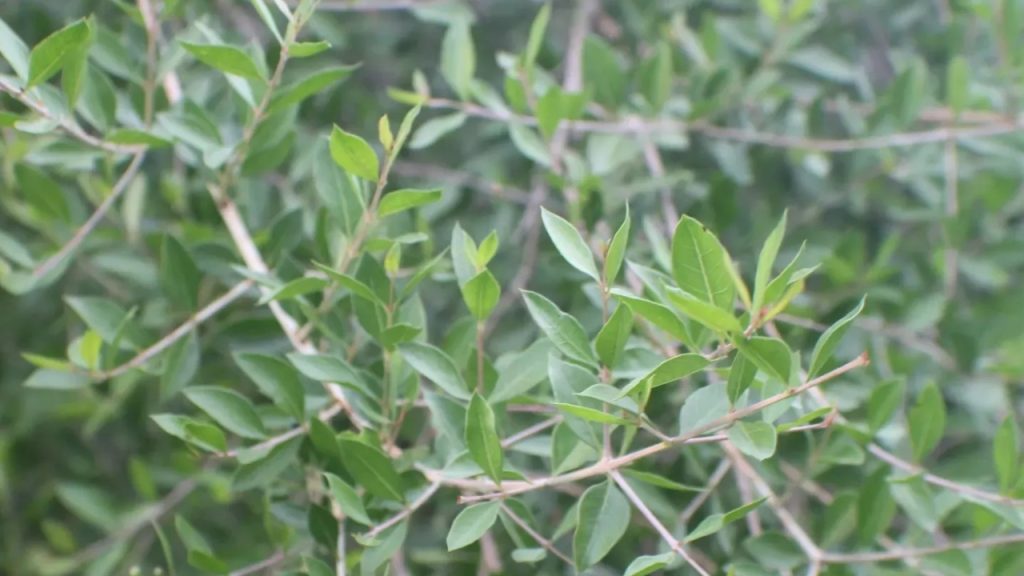
In India, Pakistan, Iran, Afghanistan, Yemen, Egypt, and Sudan, Lawsonia inermis L., commonly known as “Henna,” is frequently cultivated as a shrub or small tree. Its powdered leaves are commonly used to stain hands and hairs. Lawson’s 2-hydroxy-1,4-naphthaquinone in Henna leaves is attributed to its dyeing and antibacterial properties. This coloring component has the following structural formula:
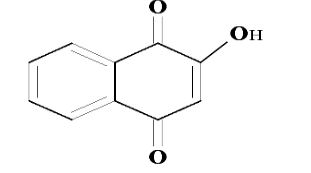
You May Read: Latest Classification of Natural Dyes in 3 Way
Tulsi Leaves:
- Plant: Ocimum sancum
- Family: Lamiaceae
- Genus: Ocimum
- Part used: Leaves
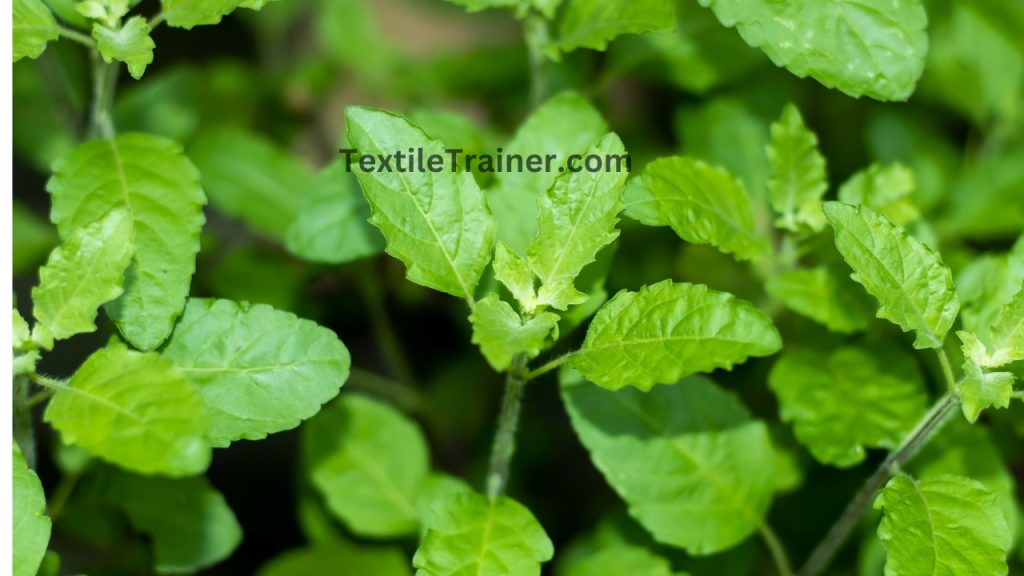
An aromatic plant, Ocimum Sanctum (Tulsi) belongs to the Lamiaceae family and is native to the old world tropics. It has spread as a cultivated plant as well as an escaped weed throughout the world. Leaves have petioles and are ovate in shape and usually slightly toothed. There are many uses for Tulsi, including religious and medical purposes as well as medicinal and essential oils. It is widely used in Ayurveda and as a plant for tea and dye production.
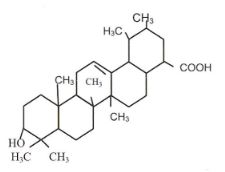
For any of the popular natural dyes, dyeing along with antimicrobial finishes has not been done so far; this is the first instance of dyeing fabric or yarn with antimicrobial finishes.
Rhododendron arboreum
- Plant: Rhododendron arboretum
- Family: Ericaceae
- Genus: Rhododendron
- Part used: Flower
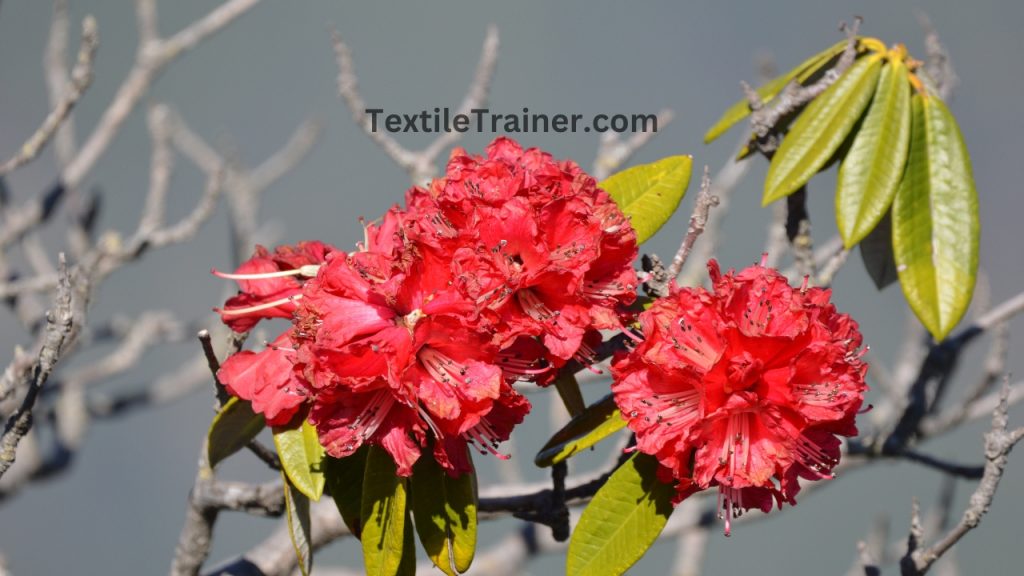
Rhododendron arboreum is an evergreen shrub or small tree with bright red flowers. Several researchers have studied rhododendron flower extracts. Zhu and Sibiano (Zhu, Muhan and Li, 1991) tested the effects of metal ions on red pigments that were extracted from Mulberry fruit and rhododendron flower. As red food dyes, these pigments were identified as anthocyanidin compounds. Rhododendron flower red pigment was changed by F3+e and Sn2+, while Al3+ and Zn2+ intensified the red color, while Cu2+ and Ca2+ had no effect.
Hibiscus rosa sinensis
- Plant: Hibiscus rosa-sinensis
- Family: Malvaceae
- Genus: Hibiscus
- Part used: Flower
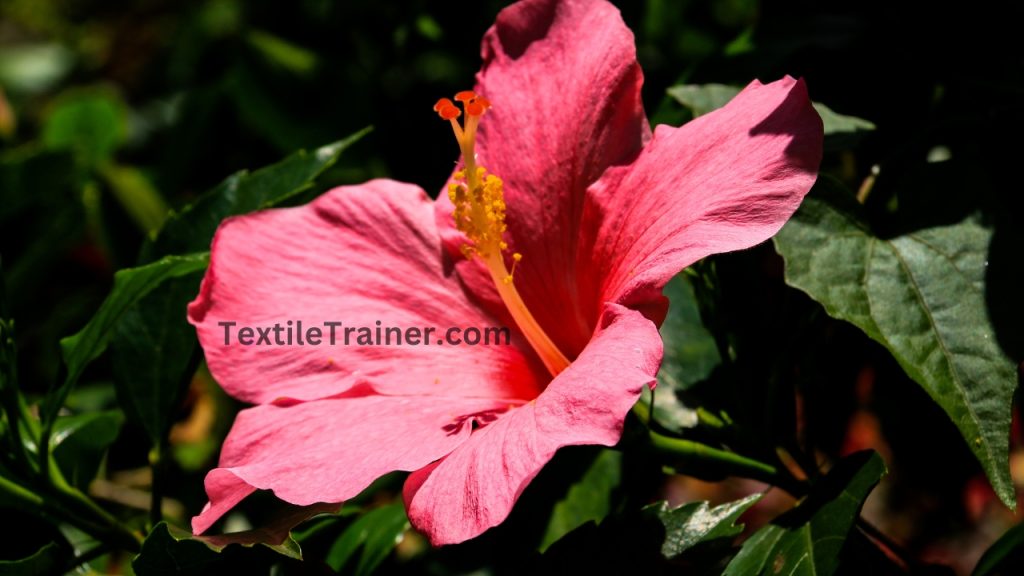
In addition to being known as the Chinese hibiscus, Hawaiian hibiscus, and shoe flower, hibiscus rosa-sinensis is also a flowering plant native to East Asia. There is little use of these flowers in textiles because they have no affinity for fibers and can’t withstand washing. Red hibiscus flowers are used to dye silk. Their anthocyanins were extracted from the flowers and mainly used to dye silk.
Combretum indicum:
- Plant: Combretum indicum
- Family: Combretaceae
- Genus: Combretum
- Part used: Flower
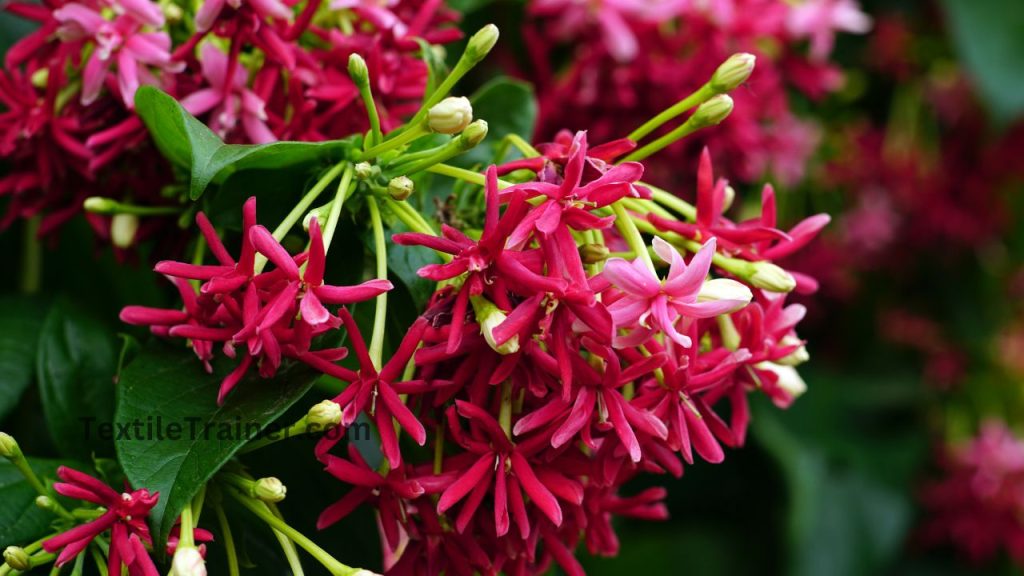
A common name for the Rangoon creeper or Burma creeper is combretum indicum. Silk fabrics were conventionally dyed using alum, ferrous sulfate, potassium cichromate, and aqueous extract of dark pink variety flowers of Combretum indicum. A CIE lab report was conducted to determine the K/S values and fastness properties of the dyed fabrics.
Turmeric:
- Plant: Curcuma longa
- Family: Zingiberaceae
- Genus: Curcuma
- Part used: Root
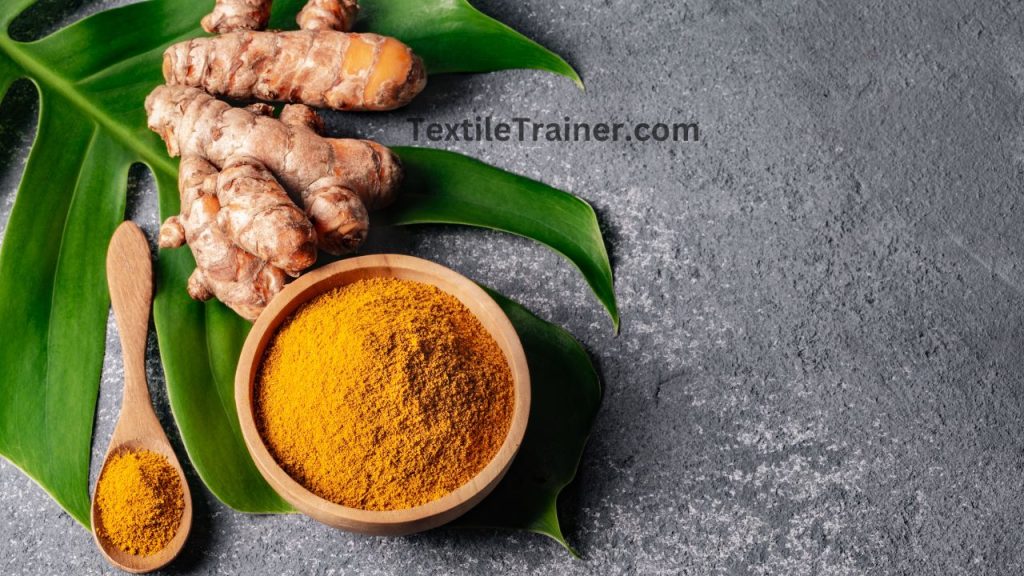
The dye is obtained from the root of the plant. Turmeric roots are dried, crushed in powder form, then boiled in water to extract dye. A good mordanting process improves the colourfastness of cotton, wool, and silk. By dyeing with turmeric natural dye, the brilliant yellow shade is obtained. Turmeric is a rich source of phenolic compounds known as curcuminoids. Curcumin is the colorant in turmeric. In its keto-enol form, curcumin is a diarylheptanoid.
Onion:
- Plant: Allium cepa
- Family: Amaryllidaceae
- Genus: Allium
- Part used: Outer cell
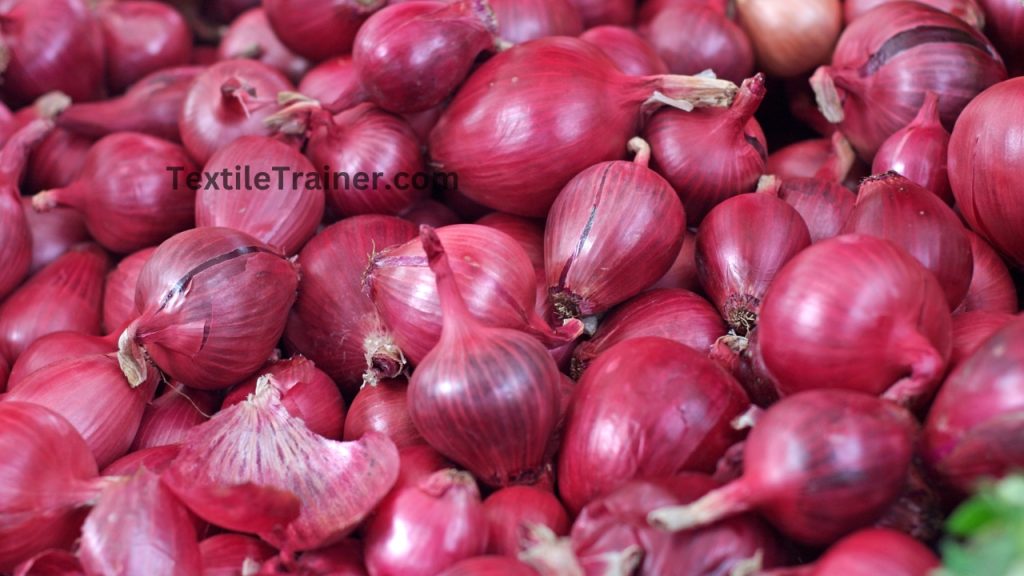
Onion skin is the main source of dye. After boiling onion skin, the dye can be extracted and dyed with or without mordanting the fabric. As a result, the result is orange to brown in colour. It contains pelargonidin (5,5,7,4 tetrahydroxy antocyanidol), a colouring pigment that varies in amount from 2.0 to 2.25 percent.
Safflower:
- Plant: Carthamus tinctorium
- Family: Asteraceae
- Genus: Carthamus
- Part used: Flower petal
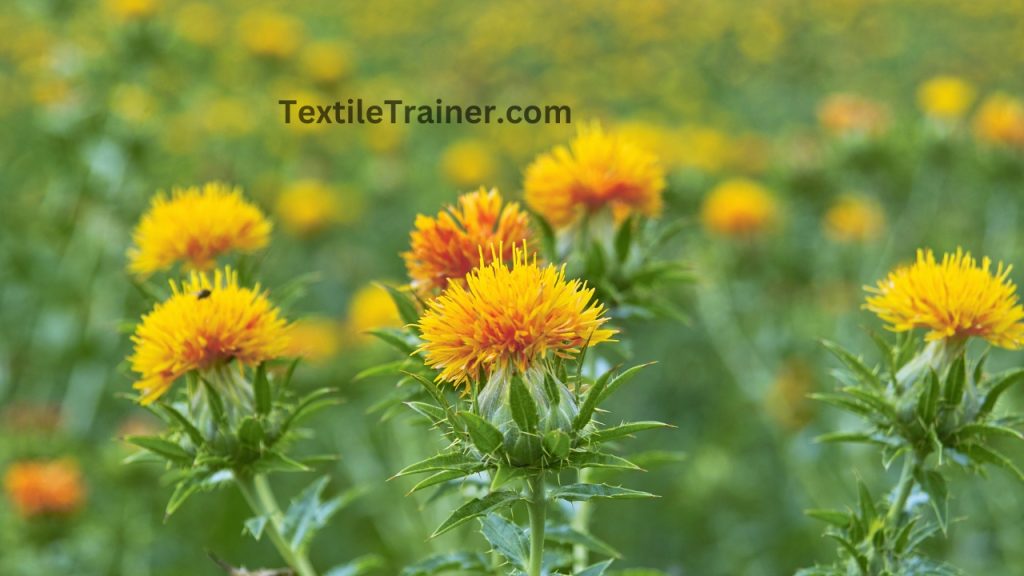
In order to dye safflower petals, distilled water is soaked first, and then boiled with water for two hours. The solution is then filtered and the filtrate is vacuum dried. It has a strength of 20–30%. When dyed, it produces cherry to yellowish red shades. Safflower contains a natural pigment called carthamine. In the biosynthesis of carthamine, chalcone (2,4,6,4-tetrahydroxy chalcone) is combined with two glucose molecules, resulting in safflor A and safflor B.
You May Read: History of Natural Dyes: From Ancient to Modern World
Some other important plant sources of natural dyes are given below:
| S/N | Plant | Botanical name | Part used | Extract color |
| 1. | Goat weed | Ageratum conyzoides | Whole plant | Yellow |
| 2. | Gulmohar | Delonix regia | Flower olive | Green |
| 3. | Water lilly | Nymphaea alba | Rehizomes | Blue |
| 4. | Dahlia | Dahlia variabilis | Flowers | Orange |
| 5. | Amla | Emblica officinalis | Bark, fruit | Grey |
| 6. | Drumstick | Moringa pterygosperma | Leaf | Yellow |
| 7. | Golden dock | Rumex maritmus | Seed | Brown |
| 8. | Red canna | Canna indica | Flower | Red |
| 9. | Cosmos | Cosmos sulphureus | Flower | Mustard color |
| 10. | Tamin | Rubia cordifolia | Roots, stem, and leaves | Reddish-orange |
| 11. | Black carrot | Daucus carota | Root | Black |
| 12. | Rambutan | Nephelium lappaceum | Dried fruit pericarp | Orange-yellow |
| 13. | Pomegranate fruit peel | Punica granatum | Peel | Brown |
| 14. | Maub | Bischofia javanica | Leaves | Dark brown |
| 15. | Rangoon creeper | Combretum indicum | Flower | Dark pink |
2. Animals/insects sources of natural dyes:
Insects were the main source of natural dyes of animal origin and most of these dyes produced red colors. The oldest dye, Tyrian purple, produced from the secretions of sea mollusc Murex, produced a deep violet color on fabrics. Some natural dyes extracted from biological sources are given below:
Cochineal Insects:
- Scientific name: Dactylopius coccus
- Family: Dactylopiidae
- Genus: Dactylopius
- Use part: Whole boddy
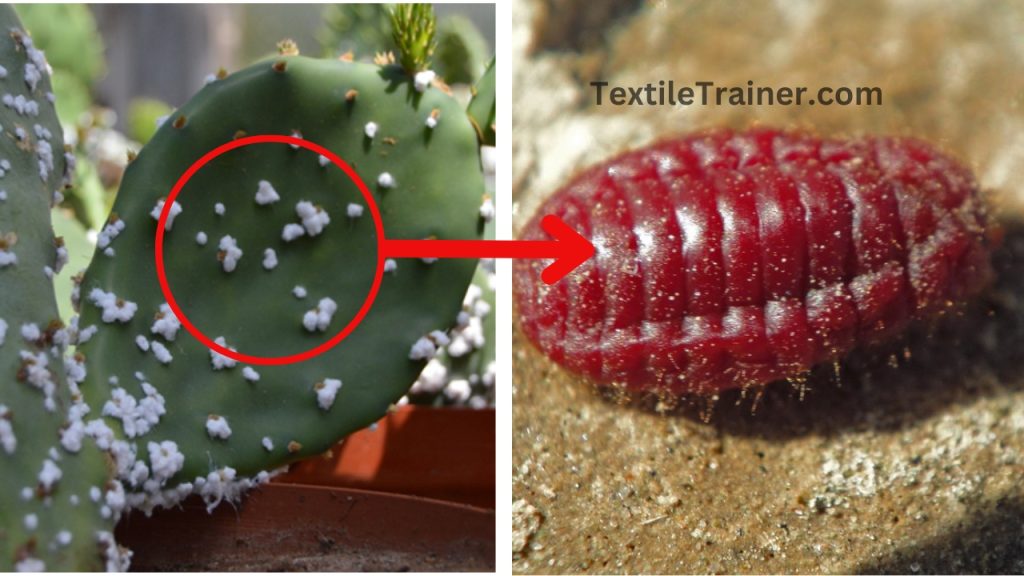
The cochineal insect’s homeland is Central America and it lives on the Nopalea cochenilli cactus. Initially brownish-red in colour, it turns dark red. Female insects contain dyes only. Female cochineal insects do not have wings, so they cannot fly. Although they do have feet, they cannot act. Male insects have wings as well as feet, so they are able to fly. The cochineal insect lives over the cactus as a result of fertilization by the male insect. Once fertilized by the male insect, the female insect lays eggs. These eggs are collected and dried after they mature. Some products can be produced per year. Most commonly, it is used in dyeing silk, wool, cotton, food coloring, cosmetics, pharmaceuticals, and plastics. An insect dye containing 94-98% carminic acid is present in it.
Lac Insect:
- Scientific name: Kerria lacca
- Family: Kerriidae
- Genus: Kerria
- Use part: Whole body
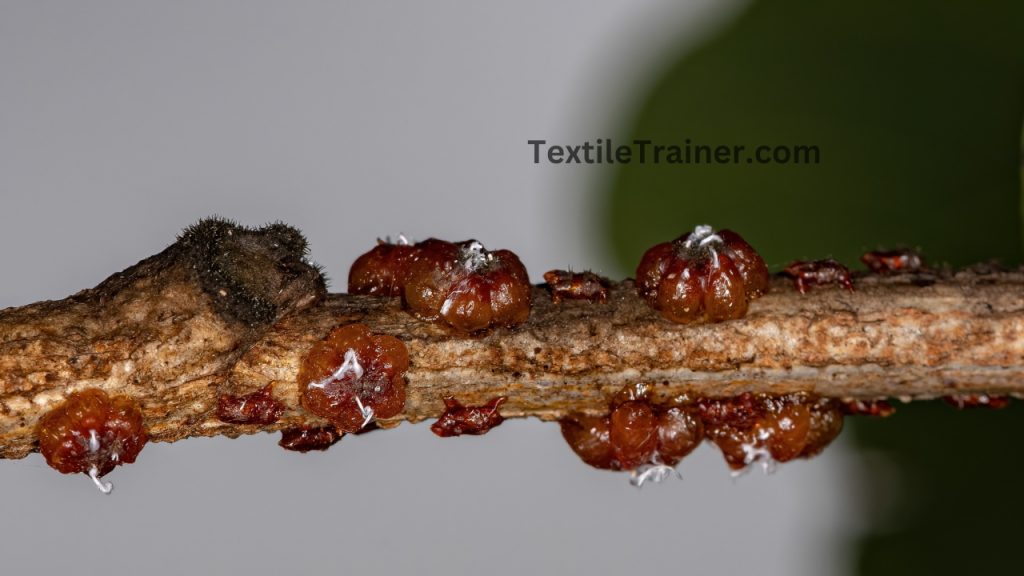
Lac dye is a red-coloured natural dye found in the body fluid of female insects called Kerria lacca . In Thailand and India, these insects can be found on the twigs of certain trees native to South and Southeast Asia. There have been many uses for lac dye, including in food and cosmetics, oil painting, and dyeing silk, wool, and cotton. As the soluble part of stick lac, lac dye is composed mainly of two major anthraquinone-based components: laccaic acids A and B. Additionally, minor components, such as laccaic acids C, D, and E, have also been isolated(Chairat, 2009). An additional lac dye component, erythrolaccin, is soluble in ethanol, producing a pale-yellow colour.
Figure chemical
Murex Snails:
- Scientific Name: Muricidae murex
- Family: Muricidae
- Genus: Murex
- Use part: Shell
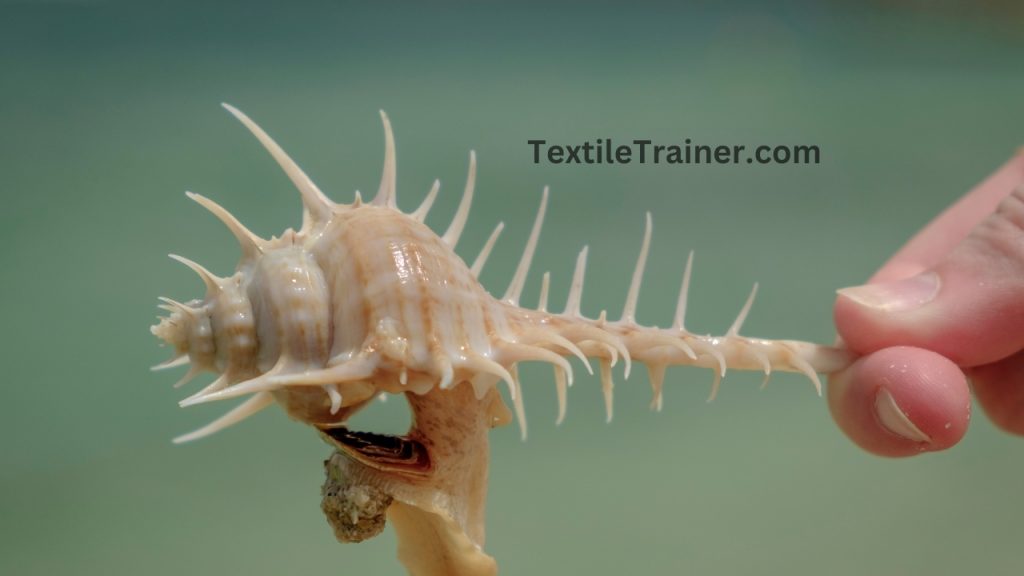
Murex sea snails were the most expensive dye source during the Hellenistic and Roman periods, which produced the Royal Purple mentioned by Aristotle. Researchers today agree that Murex sea snails produced the blue color and purple hue (Argaman) mentioned in the Bible . Depending on the amount of sunlight that is exposed to the dye solution, the final color will vary from shades of bluish-purple to reddish-purple, depending on how much light is exposed.
Polish Cochineal:
- Scientific name: Porphyrophora polonica
- Family: Margarodidae
- Genus: Porphyrophora
- Used part: Whole body
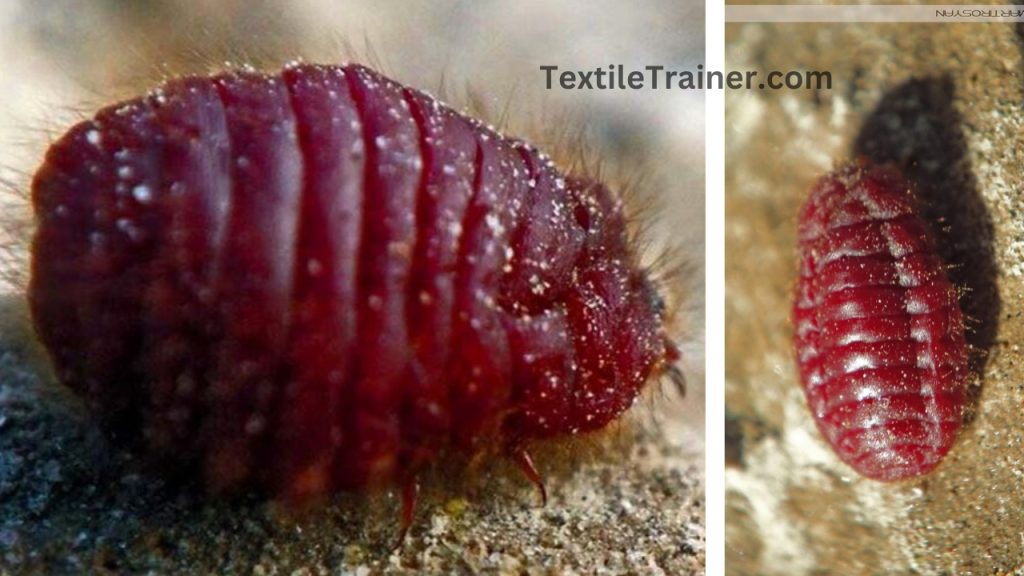
Polish cochineal (Porphyrophora polonica L.) is a scale insect that used to be fairly widespread throughout the Palearctic region, mainly Poland, Ukraine, Belarus, Germany, and Czech Republic, but also France, Hungary, Switzerland, Russia, Kazakhstan, Kyrgyzstan, and even Mongolia and China. Historically, red dye obtained from Polish cochineal has been known in Europe and the Mediterranean since antiquity , but its importance increased in the Middle Age.
Octopus:
- Scientific name: Octopus vulgaris
- Family: Octopodinae
- Genus: Octopus
- Part use: Ink
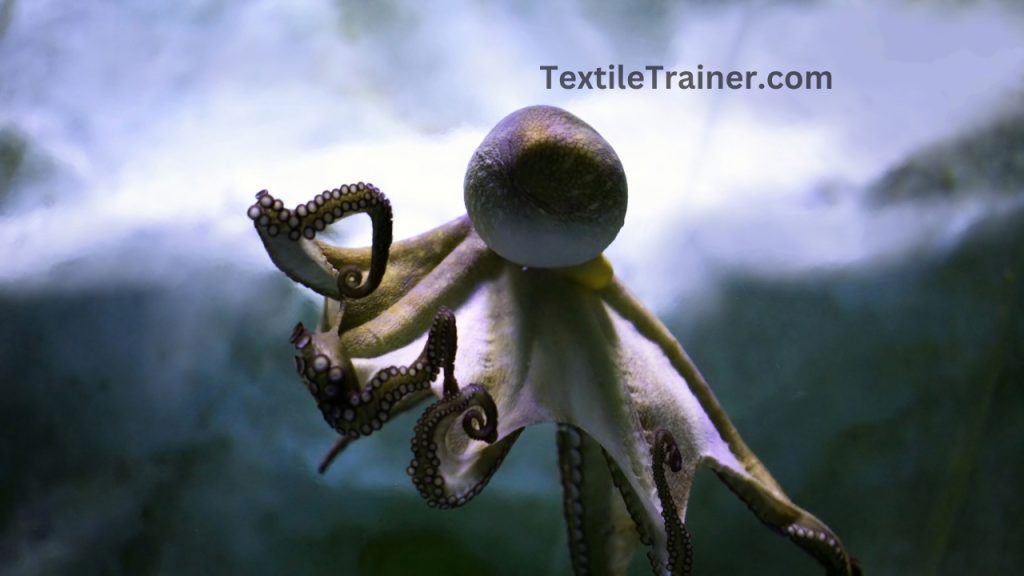
Dark colored ink is ejected by octopus as a defense mechanism. In addition to melanin (pigment), cephalopod ink also contains proteins, lipids, and glycosaminoglycans in varying concentrations, which vary from species to species. The cephalopod species produce different colors of ink. Octopus and, squid produce black, and sepia brown colored inks. Squids have ink sacs in their intestines that are non-edible and discarded as waste. There are 45 to 75 grams of cephalopod’s ink in the ink sac. The ink has antibacterial, anti-radiation, anti-oxidant, and anti-retroviral properties. When applied to cotton fabrics, the ink imparts color and medicinal benefits.
3. Mineral sources of natural dyes:
A mineral dye is a dye that comes from a mineral source. It includes several colors derived from inorganic metal salts and metal oxides. It can be classified according to its color. The most important mineral dyes are:
- Cinnabar: The mineral is also known as vermillion. It has a metallic adamantine luster and is produced by mercury sulphide (HgS).
- Red Ochre: As a naturally occurring earth pigment containing iron oxide (Fe2O3.nH2O), it is also known as limonite. The stability of ochre is little affected by light, acids, and alkalis. The monks dyed their robes with red ocher, but gum was also used as a binding agent for painting and murals.
- Yellow Ochre: These hydrated varieties of iron oxide, especially limonite (Fe2O3.H2O), are what give yellow ocher its color. They are used in fabrics such as sails, natural fibers and even synthetic polyacrylonitrile.
- Raw Sienna: Among the Siena earth colors, raw sienna contains iron oxide and manganese oxide. It was the first pigment to be used in human cave drawings, along with ochre, due to its high degree of transparency.
- Malachite: Known for its vivid, deep green color, malachite (Cu2(OH)2CO3) occurs naturally along with azurite, an intense green mineral composed of copper carbonate mixed with copper hydroxide.
- Ultramarine Blue: The ultramarine dye is obtained from the semiprecious stone lapis lazuli. In India, it is used for textiles and miniature paintings.
- Chalk: There are various types of calcium carbonate (CaCO3), including chalk. Chalk has been widely used as a pigment since very ancient times and is typically found in combination with limestone. Artists in India love conch shell white because it is thought to have special qualities.
Some other mineral sources of natural dyes:
| S/N | Name | Chemical structur | Extract color |
| 1. | Red lead | Pb3O4 | Red |
| 2. | Orpiment | As2S3 | Yellow |
| 3. | Litharge | 2PbCO3.Pb(OH)2 | Yellow |
| 4. | Vedgiris | Cu(CH3COO)2 | Green |
| 5. | Azurite | Cu3(CO3)2(OH)2 | Blue |
| 6. | White lead | PbCO3 | White |
| 7. | Zinc white | ZnO | White |
4. Microbial and fungal sources of natural dyes:
A growing demand for natural dyes has led to the use of a variety of microbial sources to extract dyes, since natural sources such as plants and animals are scarce. As a result of their color, stability, and sustainable supply, fungi and bacteria have been given special attention for their ability to produce natural hues. Below are some sources.
- Pseudomonas: The bacteria produces pigments, like pyocyanin, pyoverdine, pyorubin, and pyomelanin, which are soluble in water.
- Achromobacter: The organism produces a red pigment when cultivated in a medium containing yeast extract and tryptophan.
- Bacillus: A pigment-producing gram-positive bacteria, it produces yellow, brown, orange and pink pigments.
- Rhodococcus: This species is used in bioprocess technology, bioremediation, pigment synthesis, and probiotics in aquaculture. Carotenoids are the pigments ranging from yellow to orange.
- Flavobacterium: These bacteria are rod-shaped and contain flexirubin as their main pigment.
- Amygdalaria panaeola: The species produces pigments Panaefluorolines A, B, and C, which belong to the Isoquinoline class. A yellowish green color is obtained.
- Aspergillus sulphureus: There are two types of pigments that it produces, Viopurpurin and Rubrosulfin, which belong to the napthaquinone class. They impart purple and red colors to the species.
- Aspergillus glaucus: Among the Hydroxyanthraquinone class of compounds that appear in these fungi, Catenarin, Erythroglaucin, and Rubrocristin constitute the primary pigment.
Other Microbial and fugal source of natural dyes are mention blow table:
| S/N | Micro organism | Molecule | Extract color |
| 1. | Xanthophyllomyces dendrorhous | Astaxanthin | Pink red |
| 2. | Halogeraz alexandrines | Canthaxanthin | Dark red |
| 3. | Staphylococcus aureus | Staphyloxanthin Zeaxanthin | Golden yellow |
| 4. | Janthinobacterium Lividum | Violacein | Purple |
| 5. | Dunaliella salina | β-carotene | Red |
| 6. | Monascus roseus | Canthaxanthin | Orange pink |
| 7. | Blakeslea trispora | Lycopene | Red |
| 8. | Cordyceps unilaterialis | Napthoquinone | Deep blood red |
| 9. | Ashbya gossypi | Riboflavin | Yellow |
| 10. | Fusarium sporotrichioides | Lycopene | red |
You can watch the video:
Reference:
- Castañeda-Ovando, A., Pacheco-Hernández, M. de L., Páez-Hernández, M. E., Rodríguez, J. A., & Galán-Vidal, C. A. (2009). Chemical studies of anthocyanins: A review. Food Chemistry, 113(4), 859–871. https://doi.org/10.1016/j.foodchem.2008.09.001
- Chairat, M. (2009). Thermodynamics Study of Lac Dyeing of Silk Yarn Coated with Chitosan. Walailak Journal of Science and Technology, 6(1), 93–107.
- Malik, K., Tokkas, J., & Goyal, S. (2012). Microbial Pigments : A review. May, 361–365.
- Zhu, Muhan and Li, S. (1991). The effect of metal ions on mulberry and rohododendron pigments (Shipin Yu).
- Yusuf, M., Shabbir, M., & Mohammad, F. (2017). Natural Colorants: Historical,
- Processing and Sustainable Prospects. Natural Products and Bioprospecting, 7(1), 123–145. https://doi.org/10.1007/s13659-017-0119-9
- Harsito, C., Prabowo, A. R., Prasetyo, S. D., & Arifin, Z. (2021). Enhancement stability and color fastness of natural dye: A review. Open Engineering, 11(1), 548–555. https://doi.org/10.1515/eng-2021-0055
- Gupta, V. K. (2016). Fundamentals of Natural Dyes and Its Application on Textile. Intech.
- Grierson, S., Duff, D. G., & Sinclair, R. S. (1985). Natural Dyes of the Scottish Highlands. Textile History, 16(1), 23–43. https://doi.org/10.1179/004049685793701223
- Chungkrang, L., & Bhuyan, S. (2020). Natural Dye Sources and its Applications in Textiles: A Brief Review. International Journal of Current Microbiology and Applied Sciences, 9(10), 261–269.
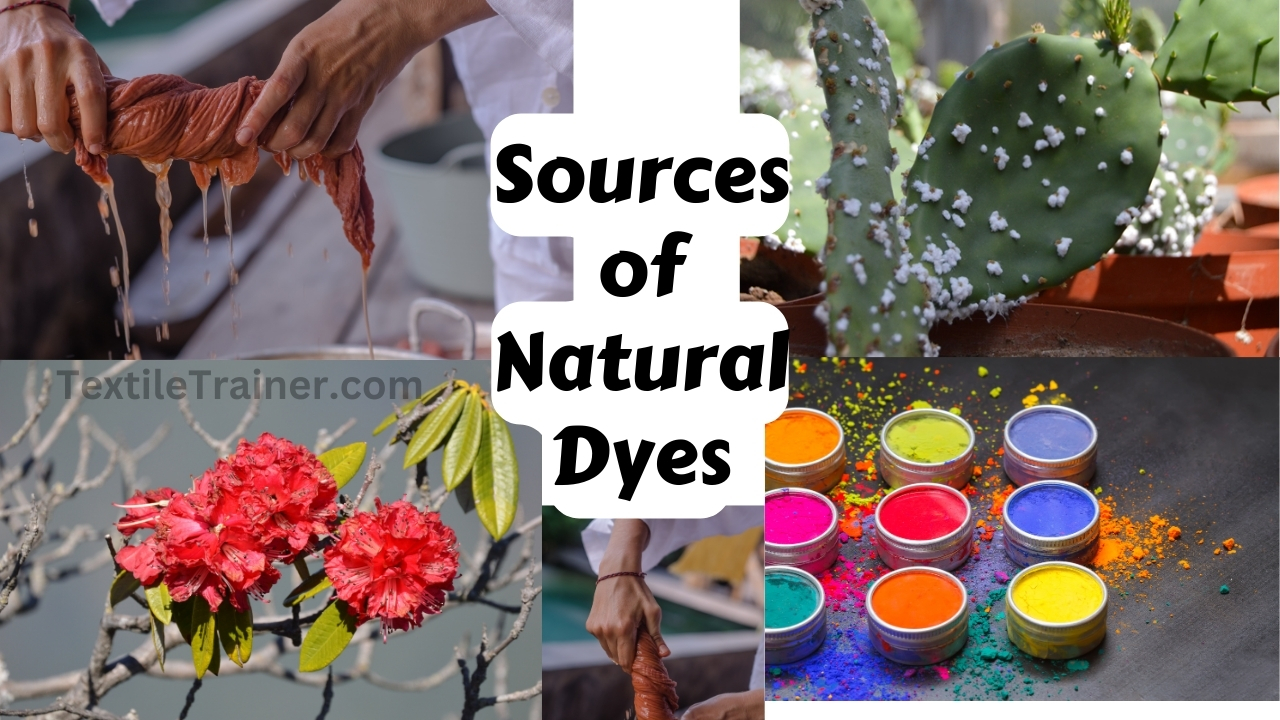
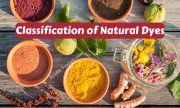

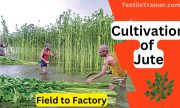

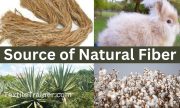
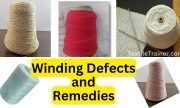
2 thoughts on “4 Authentic Sources of Natural Dyes is Describe Easy Way”